How to Create Pillar Content Google Will Love
- Fahad H

- Apr 24, 2018
- 7 min read

You’re at the bottom of the mountain you’ve been told to climb to the top. You look up at the summit and it seems so far away. You’re not sure how you’re going to get there. A clearly defined path isn’t visible to guide you in the right direction. The whole situation is a bit scary and overwhelming.
But others before you have climbed this mountain. They’ve made it to the summit. And if they can to do it, then you can too.
The top of the mountain – literal or metaphorical – is reached when you focus on each step, not how steep it is. You reverse engineer the climb.
You can do this with your content and climb the mega mountain of Google search. Working backward step by step, you can create a valuable piece of long-form content – and create a map on how to blaze that trail the next time.
Your mountaintop is a resource-driven pillar page, which serves as a library to showcase your top-performing content on a specific topic.Climb the mountain of Google search backwards step by step by creating a resource page, says @JustinRChampion. Click To Tweet
And to help you visualize the climb, let’s think about the travails of a dentist’s patient. Put yourself in the dentist’s chair, getting your teeth cleaned. Your dentist informs you that you’re susceptible to gum disease and recommends you take your oral hygiene seriously.
You don’t really know much about gum disease. As you leave the office, you whip out your smartphone and type “gum disease” into Google. The first page of the search engine results looks like:

The second non-ad result is from Colgate. It references gum disease causes, prevention, and treatment. If you’re looking for a comprehensive resource on gum disease, this link might be a good place to start.
You click the link.
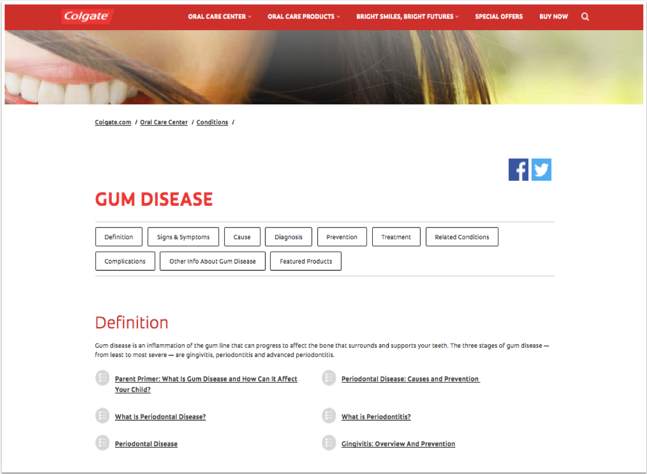
Upon arriving at Colgate’s gum disease page, you’re pleasantly surprised by the depth of content. Various sections focus on contextual situations related to gum disease with referral links to continue learning. You can find the content you’re looking for without having to dig for it.
Think of Colgate’s gum disease resource page as the top of the mountain – a pillar of content like the one you aim to create for your brand. Let’s reverse engineer it with this six-step process – and create a path for you to create a resource pillar page of your own.
HANDPICKED RELATED CONTENT: 5 Reasons SEO Should Take a Back Seat With Website Content
1. Determine head term
Identify a head term – an overarching keyword topic with high monthly search volume. This head term serves as the summit of your mountain. It should be broad, usually two words (depending on your industry). For example, “gum disease” would be a great example of a head term for Colgate. It’s broad enough to be explained with context (which I’ll get into in the next section).

To make sure you choose a correct head term to align your ongoing content creation efforts, it should support at least one of your products and/or services and should be a term your buyer persona would use when searching. It’s important that your content supports visitors becoming customers.It’s important that your #content supports visitors becoming customers, says @JustinRChampion. #SEO Click To Tweet
Colgate features products related to gum disease at the bottom of its resource page.
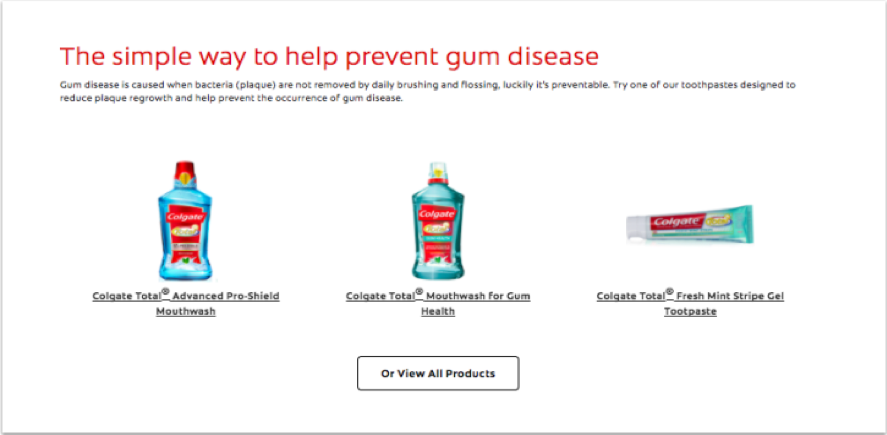
To find potential head terms, you can perform research on Google. Use the Keywords Everywhere plug-in to determine monthly search volume.

TIP: Choose a head term with a monthly search volume of at least 2,500 that aligns well with your content marketing strategy. Colgate’s head term – gum disease – has a monthly search volume of 90,500.Identify a head term for your pillar content w/ a monthly search volume of at least 2,500. @JustinRChampion Click To Tweet

Identifying the summit first (i.e., the head term) makes it easier to reverse engineer how you’re going to get there.
HANDPICKED RELATED CONTENT:
2. Identify core topics
Next, you want to select a series of core topics – terms that align with and provide context to your head term. These topics have high monthly search volume but not as high as the broader head term.

Most core topics are usually three to five words (depending on your industry). “Gum disease prevention” would be a great core topic that contextually supports the head term “gum disease.”
Your goal is to rank well on search engines for each core topic. Core topics are the strategic sweet spot for achieving rankings on search engines. Colgate claims the No. 2 position on Google for “gum disease prevention.”Core topics are the strategic sweet spot for rankings in search engines, says @JustinRChampion. #SEO Click To Tweet

Research potential core topics on Google. Review Google’s autocomplete and related search suggestions. The Keywords Everywhere plug-in also enables you to view monthly search volume for each suggestion.
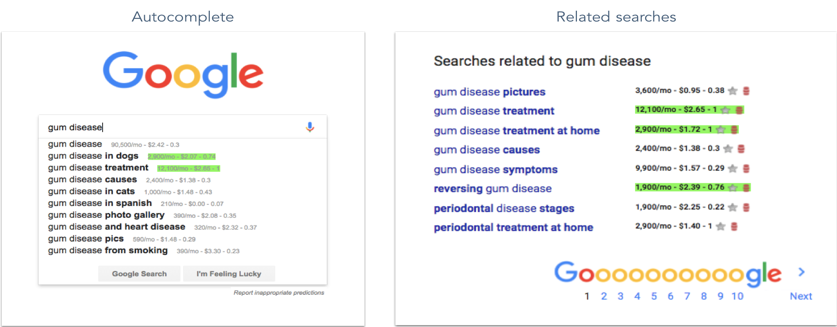
TIP: A core topic doesn’t need to include the exact head term. Remember, search engines are much smarter in 2018 and understand synonyms of your head term. Notice how the head term “gum disease” generates a related search suggestion of “periodontal disease stages.”
When performing research on search engines, don’t just focus on monthly search volume. Take the time to analyze the first page of the search engine result listings.
Click the top listings and review each link’s content. Ask yourself: Is this content up to date? What’s the searcher’s intent? How could this content be improved?
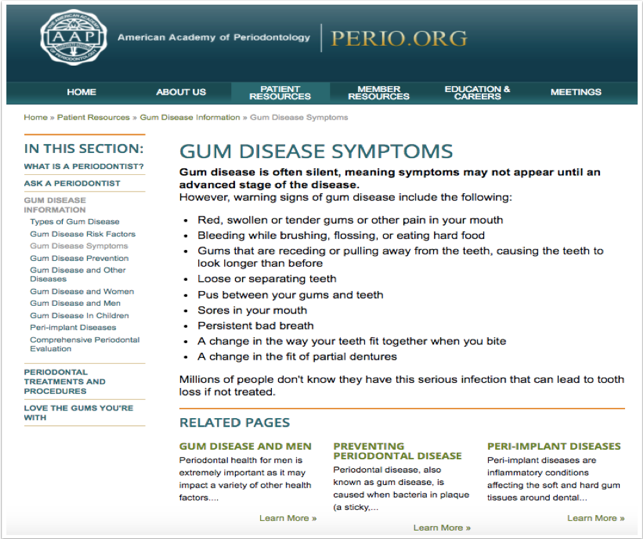
If you’re unable to provide new value on a core topic you’re researching, then skip it. The last thing you want to do is create something already being said well.If you can’t provide new value to a topic, skip it. Don’t create something already said well. @JustinRChampion Click To Tweet
After reviewing a link, click the back button to return to the search engine results page and look at what “people also search for.”
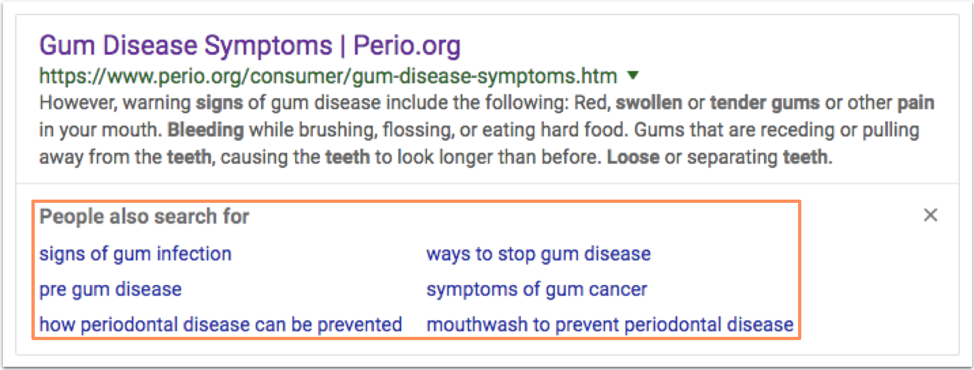
TIP: Choose core topic terms that have a monthly search volume between 400 and 2,500. Colgate’s core topic “gum disease prevention” has a monthly search volume of 590.
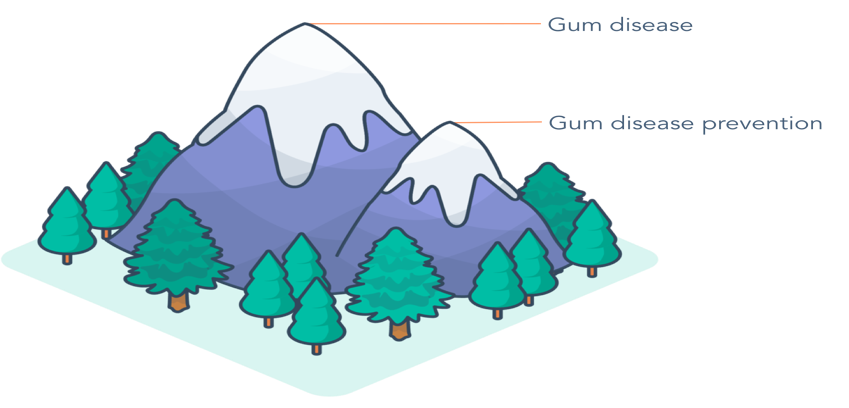
HANDPICKED RELATED CONTENT:
3. Source subtopic content to form your topic clusters
Determine subtopic content based on your core topic clusters. Subtopic content is the base of the mountain – the content you create on a weekly basis, like blogs, videos, etc.

Your core topics should be supported with subtopic content assets. Think of each piece of subtopic content as a step toward your core topic visibility.
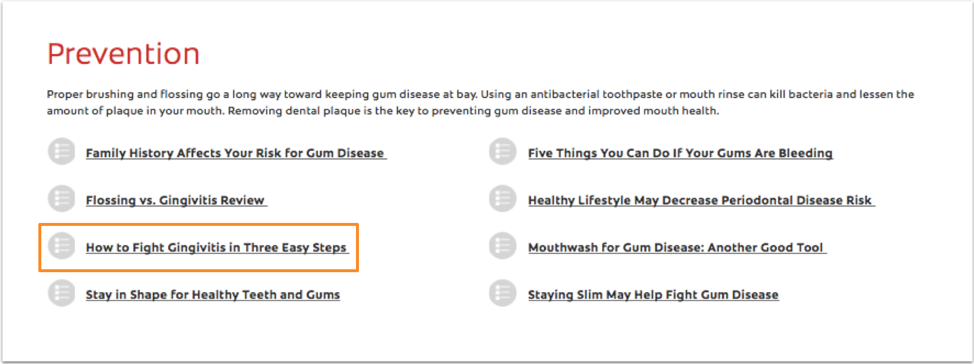
You may have dozens, hundreds, or even thousands of potential subtopic content assets. The goal should be to fill the core topic section on your resource page with top-performing subtopic content assets – connecting people with the most valuable resources based on what others found helpful.
TIP: Think of potential subtopic content ideas in the form of a question because people usually type search queries in the form of a question. Monthly search volume for a subtopic should be between 10 and 400. Colgate’s subtopic, “how to fight gingivitis,” has a monthly search volume of 320. It expanded the subtopic into a blog post by adding more context, “How to fight gingivitis in three easy steps.”
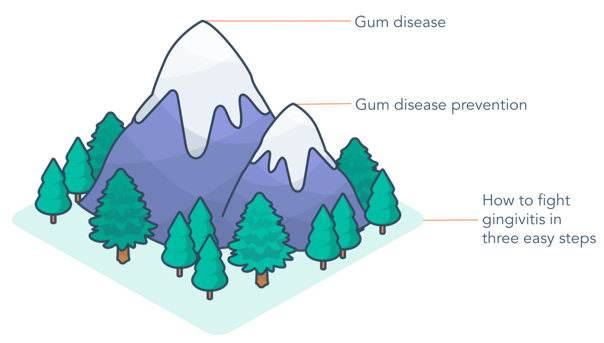
HANDPICKED RELATED CONTENT: Does Your Content Answer Searchers’ Questions?
4. Increase website authority via inbound links
You’re not the only website competing for attention. You may offer the best content, but if a competitor has a stronger website authority, it likely will rank higher in search than your website. A high website authority indicates the content is more trustworthy and credible by search engines.

One of Colgate’s biggest competitors, Crest, created a comprehensive “gum disease” page. It offers sectioned content with a lot of helpful text, images, and video.
Where do you think this page ranks on Google?
Crest’s “gum disease” page is visible on the ninth page of Google search results.

Why is the Crest page ranked so much lower than Colgate’s? They both have helpful information. They both link to relevant resources. They’re both household names. But Colgate’s inbound links are double that of Crest’s.

HANDPICKED RELATED CONTENT: 4 Strategies to Earn Natural, High-Quality Links for Your Content
5. Focus on creating your first topic cluster
The first four steps are a lot to take in. The best thing is to focus your time and energy on creating your first cluster of related content that links to a pillar page for a core topic. I don’t want to shortchange this statement: It takes time to create remarkable content.
When creating your first topic cluster, I recommend creating a 10x content pillar page. A 10x content pillar page is a deep dive on a core topic. The format is similar to an ungated e-book or guide with a packaged downloadable resource of the page’s content for people who want to print or save the information.
An efficient way to create the 10x content pillar page is to first create the downloadable resource. If you have one, deconstruct it into a 10x content pillar page.
On my alternative living website, Wild We Wander, I deconstructed our DIY truck camper guide into an ungated 10x content pillar page.
The result? Since creating the 10x content pillar page in February 2017, organic, non-paid traffic from search engines went up 943%.
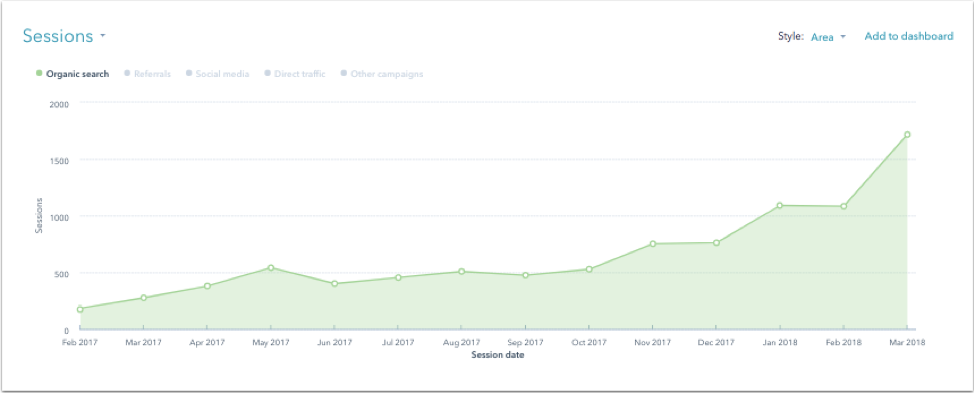
If you don’t have a guide or e-book, consider reverse engineering one through a series of related blog posts. That’s how I created the DIY truck camper guide over the course of two months – using my website’s blog.
TIP: Ahrefs found the average first page ranking also ranks well for about 1,000 other relevant keywords. Keeping this in mind, make sure to narrow the focus of your topic clusters around one core topic. Remember, if you’re able to get a first page ranking for your core topic, then chances are there will be other rankings Google will reward you with.
6. Keep climbing
Creating content that ranks on the first page of Google results is not an easy feat. But with the right planning and mindset, it’s possible. When things become difficult and roadblocks appear, remember why you’re doing this in the first place – to get to the top. And once you get there, you’ll feel what it’s like to see your hard work pay off.
HANDPICKED RELATED CONTENT: Google’s Featured Snippets FAQ: How to Get More Traffic From Search Engines
Please note: All tools included in our blog posts are suggested by authors, not the CMI editorial team. No one post can provide all relevant tools in the space. Feel free to include additional tools in the comments (from your company or ones that you have used).
Build your pillar content with expert insight. Learn from over 100 presenters at Content Marketing World Sept. 4-7. Register today using code BLOG100 to save $100.
Cover image by Joseph Kalinowski/Content Marketing Institute








Comments